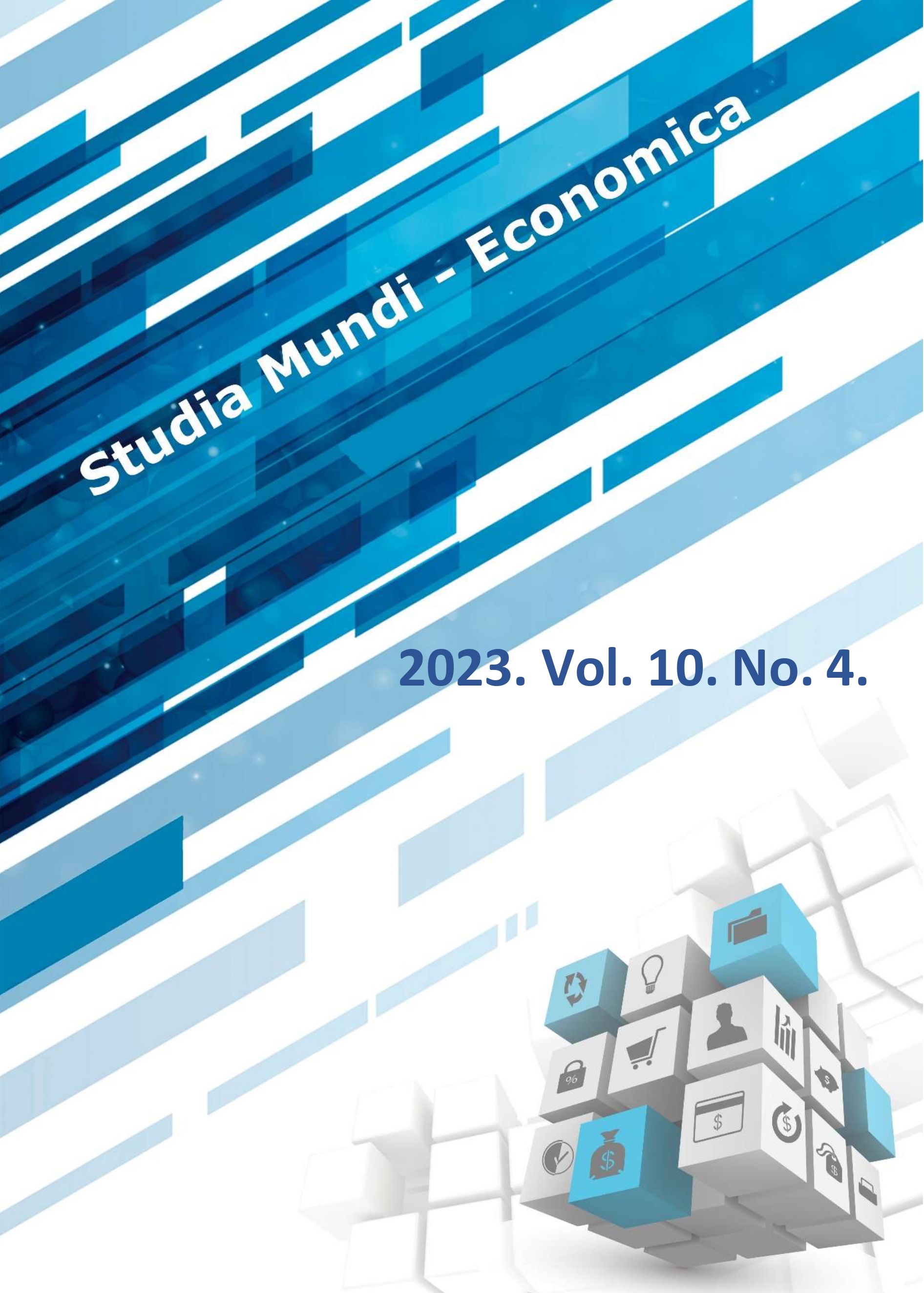Efficiency analysis of apple and grape producers
A case study of Hungarian SMEs’ producing apples and grapes in 2021
DOI:
https://doi.org/10.18531/sme.vol.10.no.4.pp.32-46Schlagwörter:
efficiency, SME, apple producer, grape producerAbstract
In recent years, the world has experienced unforeseen events that have greatly affected the population and the economy. It is important to analyze how the agricultural sector has responded to these events and assess its effectiveness as its performance is always vital, in peaceful periods but even more during the highly uncertain period we have been facing these last years. In Hungary, the most significant fruit production is the cultivation of apples. The specificity of apples, compared to other fruits, is that they can be stored and consumed in their original form all year round. Over the years, however, the final use of apple production has changed, as today most of it is intended for industrial processing in Hungary. The grapes are also consumed as a fruit during a short period of the year. However, a minimal proportion of the grapes are consumed freshly, and most of it is used instead to make the products of the winery. Overall, the country's apple and grape fields have been steadily decreasing over the years. The yield is fluctuating for both apples and grapes, however, the grape yield has been steadily decreasing over the past 5 years. How do these two sectors operate in 2021, one year after the start of Covid-19? This research aims to provide a comprehensive picture of the apple and grape growing sector and then to specifically analyze the financial efficiency of Hungarian small and medium-sized enterprises operating in those two sectors in 2021.
Literaturhinweise
Act XXXIV. of year 2004: About small- and medium-sized enterprises and supporting their development.
Ahrendsen, B. L. – Katchova, A. L., (2012): Financial ratio analysis using ARMS data. Agricultural finance review. 72(2). DOI: https://doi.org/10.1108/00021461211250492
Csete, L., et al. (1974): Mezőgazdasági vállalatok és üzemek gazdaságtana. Economic and Legal Book Publisher, Budapest.
Dancs, A. J. – Molnár, J. (1997): Magyar-angol közgazdasági fogalom-és példatár. Szaktudás kiadóház Rt., Budapest.
Ebadi, S. K. et al. (2022): Quality testing of new Hungarian apple cultivars in normal atmosphere storage. Journal of food processing and preservation, 46(3), 54. p., DOI: https://doi.org/10.1111/jfpp.16354
EMIS (2022): Database. Download date: 03/02/2023. source: URL: https://www.emis.com/php/companies/index-v2
Eurostat, (2022): Database European Union Statistics. Download date: 20/01/2023. source: URL: https://ec.europa.eu/eurostat/web/agriculture
FAO (2022): Database, Food and Agriculture Organization. Download date: 20/01/2023. source: URL: https://www.fao.org/faostat/en/#data
HSCO (2022): Database, Hungarian Central Statistical Office. Download date: 21/01/2023. source: URL: http://www.ksh.hu
Ibendahl, G. (2018): Comparing the financial ratios ROA and ROE. Kansas State University Department of agricultural economics, 04/03/2018. 1-4. p. [online] Download date: 04/02/2023
Kiss, G. – Demeter, E. (2022): Agrárgazdasági statisztikai zsebkönyv 2021. Download date: 02/04/2021. source: http://repo.aki.gov.hu/id/eprint/4017
Kiss, K. (2014). A hazai kis-és középvállalkozások strukturális és területi jellemzői európai uniós összevetésben. Modern geográfia, 9(4), 1-24.
Nábrádi, A. – Pető, K. (2009): Különböző szintű hatékonysági mutatók.
Nábrádi, A. et al. (2008): A hatékonyság mérésének módszertana: Különböző szintű hatékonysági mutatók (parciális, komplex, társadalmi, vállalati, regionális, és makrogazdasági). In: Szűcs István-Farkasné Fekete Mária (szerk.): Hatékonyság a mezőgazdaságban. Agroinform Kiadó. Budapest. ISBN:978-963-502-889-4. 23-51.
Statista (2022): Statista Dossier on agriculture in Hungary. Download date: 05/02/2023. source: https://www.statista.com/study/111774/agriculture-in-hungary/
Szabó, V. (2016): Az almatermelés hatékonyságának alakulása az intenzitás növelése és a műszaki fejlesztések függvényében. [PhD thesis] Debrecen: Doctoral School of Kerpely Kálmán. Download date: 05/02/2023 source: https://dea.lib.unideb.hu/server/api/core/bitstreams/06b5e307-2c1e-49a0-b635-7e33d054d6a8/content
Szabó, A. et al. (2021): The influence of hail net on the water balance and leaf pigment content of apple orchards. Scientia horticulturae. 283. 110112. DOI: https://doi.org/10.1016/j.scienta.2021.110112
Erdős, A. D. – Szőllősi, L. (2021): The economic situation of Hungarian crop production enterprises, especially in Hajdú-Bihar County. Applied Studies in Agribusiness and Commerce. 15( 1-2). DOI: https://doi.org/10.19041/APSTRACT/2021/1-2/11
Szűcs, D. (2020): Hogyan tovább? magyar almatermesztés a XXI. században. Közép-európai közlemények, 13(4), 25-46.
USDA foreign agricultural service (2021): Fresh apples, grapes, and pears: world markets and trade. Washington, dc.
Vida, V. – Popovics, P. A. (2020). Impact of the COVID-19 on Behaviour: A Survey of Different Aspects of Life of the Hungarian Population. Cross-Cultural Management Journal. 22(2), 161–174.
Downloads
Veröffentlicht
Ausgabe
Rubrik
Lizenz
Copyright (c) 2023 Nouar Dalila, Popovics Péter András

Dieses Werk steht unter der Lizenz Creative Commons Namensnennung - Nicht-kommerziell - Keine Bearbeitungen 4.0 International.
A folyóirat Open Access (Gold). Cikkeire a Creative Commons 4.0 standard licenc alábbi típusa vonatkozik: CC-BY-NC-ND-4.0. Ennek értelmében a mű szabadon másolható, terjeszthető, bemutatható és előadható, azonban nem használható fel kereskedelmi célokra (NC), továbbá nem módosítható és nem készíthető belőle átdolgozás, származékos mű (ND). A licenc alapján a szerző vagy a jogosult által meghatározott módon fel kell tüntetni a szerző nevét és a szerzői mű címét (BY).






